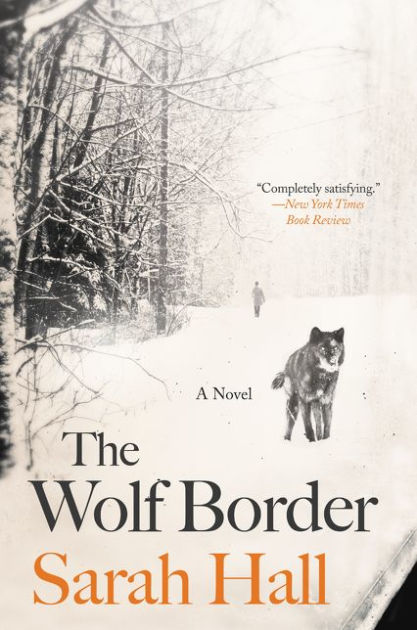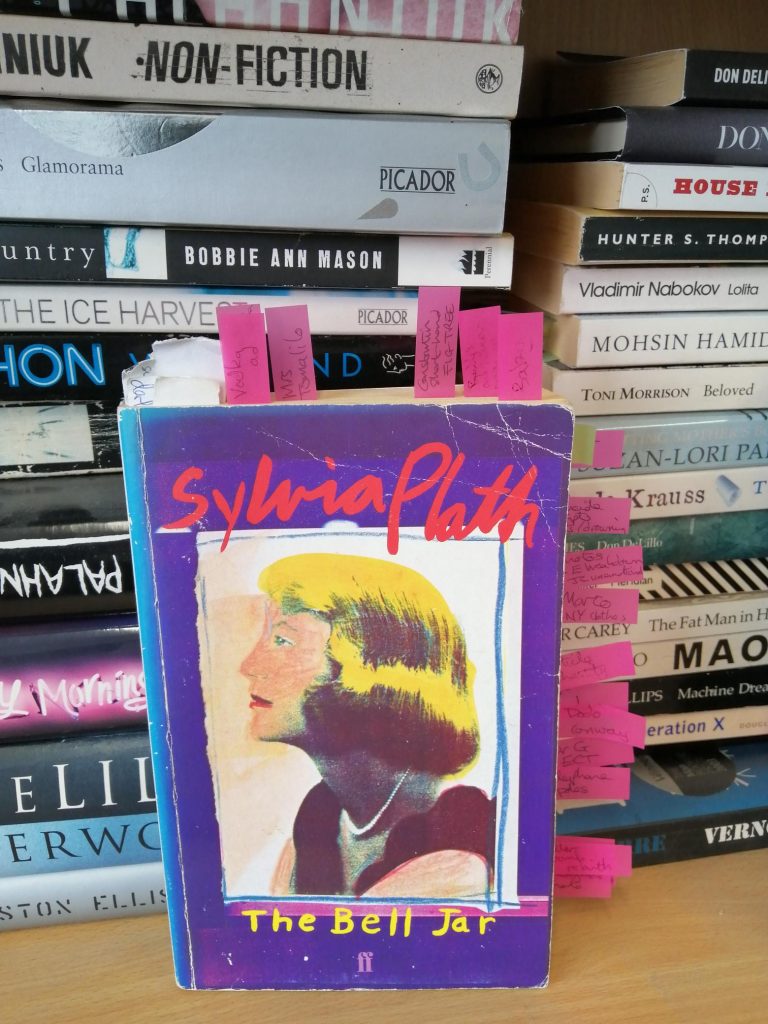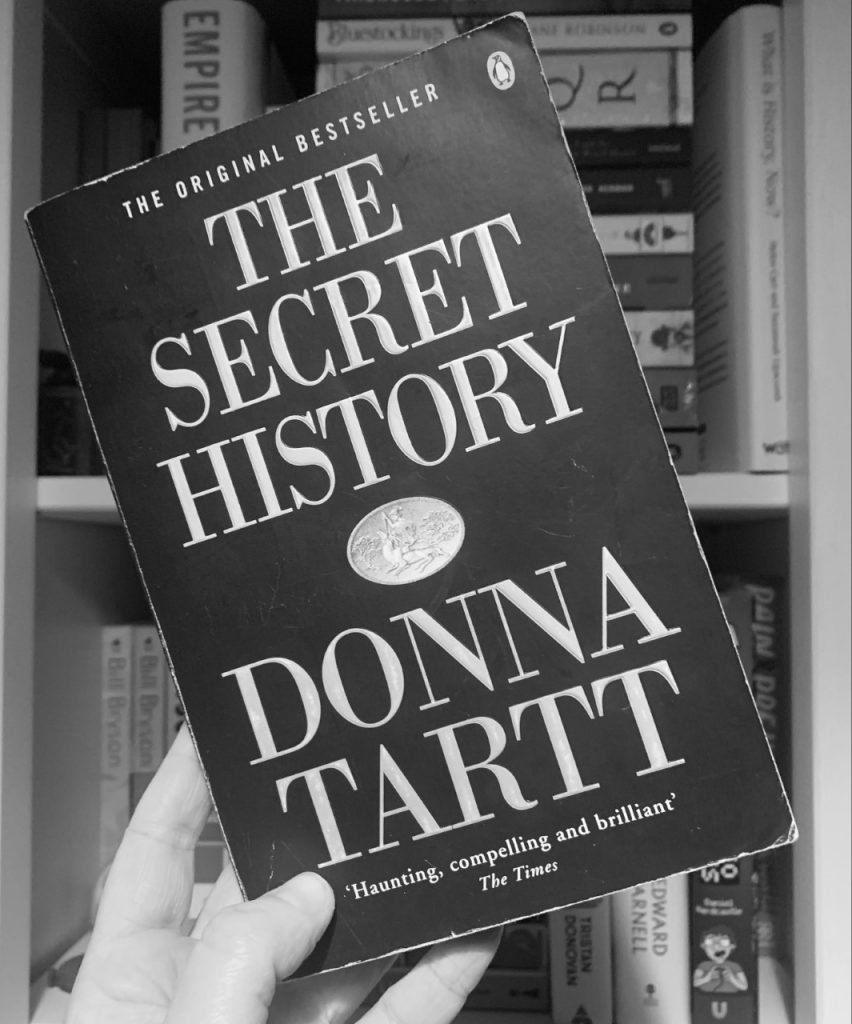Here in the English and Creative Writing department, we like to think we celebrate amazing women every single day. From our brilliant staff and students through to the wonderful female novelists, poets, playwrights, short story writers, essayists, and literary critics featured on our modules, we are surrounded by amazing women all the year round.
That said, we are not ones to pass up an opportunity to shout even louder about amazing women in literature so, to mark International Women’s Day this week, we asked some of our team to tell us about their favourite novels by female authors:
Phillipa Holloway
Senior Lecturer in English and Creative Writing (Fiction)
My favourite book is The Wolf Border by Sarah Hall. This novel follows Rachel as she moves back from her job on a wolf reserve in the USA to the borders of England and Scotland to run a rewilding programme. Dealing with her mother’s death, and reconnecting with her estranged brother as she negotiates the project and the politics of wealthy Lairds and local communities, Rachel is a character of great strength and humanity: flawed, intelligent, determined, and responsive.
Hall’s ability to portray a woman so genuine and uncompromising in the face of so many literary tropes about motherhood, relationships, and landscape is thrilling. Her prose is precise, and her evocation of place and people captures the nuances of both.
Talking about her process, she says: ‘I’m interested in the working nature of the land as well as its resistance to what we place upon it, metaphysically, and sometimes physically. This is what I’ve grown up with when it comes to Cumbria – farming, sheep, rain, difficulties travelling, self-sufficiency, obduracy, respect’ (Hall, 2009), and this close attention to details shines through in her clear depiction not of only of place but the emplaced human within it.
This is an author and novel I return to over and again.

You can read more of Sarah Hall’s 2009 interview
with the Lunecy Review at: https://performativeutterance.wordpress.com/2011/07/28/sarah-hall-interviewed-2009/
Mark Brown
Senior Lecturer in English and Course Director for Sound and Communication
Sylvia Plath’s The Bell Jar is an exploration of the social, economic, and sexual pressure on young women that seems as relevant today as it was in the 1950s, when the book is set.
At first glance, The Bell Jar does not strike the reader as an overtly political novel. The key themes that present themselves, and for which the book is popularly renowned, are the explorations of growing up in America, mental illness, teenage suicide, and the angst of a young woman finding her way in a large and scary world of work, fashion, education, and relationships. Consequently, The Bell Jar is often seen as a rites of passage novel.
These concerns are given added interest for the reader by the autobiographical detail that haunts Esther’s Greenwood’s narrative and continues to hold the public’s attention.
The novel was originally published in 1963 under a pseudonym. At the time critics found the book to be a thoughtful exploration of a young woman’s mind. However, when the book was published under Plath’s own name in 1966 its reception was strongly influenced by the circumstances surrounding her suicide at the age of 30in 1963, just after the book’s original release. Much attention, unsurprisingly, has been given to the stormy relationship with her husband, the British poet Ted Hughes, and her relationship with her two children.
But is all the biographical attention to the novel justified. Well, to some extent it is. The Bell Jar is an account of Esther’s time at college, her experiences as a ‘guest editor’ on a New York magazine and her subsequent breakdown – all supported by a wealthy sponsor. Plath too went to an all-girl college, won a scholarship to Mademoiselle magazine and attempted suicide.

The title itself speaks of both clarity and constriction. The bell jar is a glass container in which the contents can be seen clearly but can also be read as the shop windows in which the fashion-conscious characters check their reflections.
But it is also about the suffocating constraints of Esther’s situation and society: fashion and commodity as part of 50s social ideology in America, the role of the patriarchal medical profession in Esther’s illness, and the constraints of the social and political environment on Esther’s gender role and in her relationships with men.
The novel’s opening reflects on the execution in the electric chair of the Rosenbergs for spying for the USSR and goes on to explore the effects of Electro Convulsive Therapy on Esther.
The issue of gender roles and freedom for women in this book is specifically related to the issue of sexual freedom. Before the pill, sexual and moral politics revolved around ideas of health, hygiene, and conformity. Esther’s mother, for example, sends her an article entitled ‘In Defense of Chastity’, which concludes that the best form of birth control is abstinence.
At the conclusion of the novel Esther is assessed by the hospital board for a return to the society that she has rejected. To do so she must show that she is a well-adjusted, socially integrated, mentally well citizen of 1950s American society. You will have to read the book to find out if she succeeds.
Amy Louise Blaney
Associate Lecturer in English
There are so many literary works by female authors that I adore: Margaret Atwood’s The Handmaid’s Tale, Maggie O’Farrell’s Hamnet, Jane Austen’s Northanger Abbey, Margaret Cavendish’s The Blazing World…the list goes on.
For this piece, though, I wanted to share my love of Donna Tartt’s debut novel, The Secret History. Partly because it is a brilliant piece of fiction that playfully inverts the rules of genre and can be seen to have kick-started a trend for so-called ‘dark academia’, but also because its conflicted central characters – and their struggles to find their place and identity within the world – continues to resonate with me in new ways every time I re-read the novel.
Set at an elite New England university, The Secret History tells the story of a close-knit group of six classic students who, it becomes apparent, have committed a terrible crime.
The novel is narrated by Richard Papen: a young man from a modest background who finds himself, through an unusual twist of fate, becoming part of an elite clique of students, hand-picked by charismatic classics professor Julian Morrow.
Richard’s position as an outsider is crucial to the novel. As the reader, we see the events of the novel solely through his eyes and we are, initially at least, invited to sympathise with this awkward, isolated young man, marooned and adrift amidst an elite world of apparent social, intellectual, and financial privilege.
As the novel progresses, however, the novel plays with and inverts ideas of tragedy, melodrama, and detective fiction to rewrite this singular worldview. As readers, we begin to question the veracity of Richard’s narrative and the plausibility of his perceptions. As we follow this murder mystery in reverse, we are invited to consider not who the killer is – we know this from the outset – but who the victim is and, more importantly, why they are the victim and what the significance of their murder is.

Simply put, The Secret History is, like all the best novels, a book that merits repeated reading and that, as I age and evolve as a reader, unpacks itself in new ways with each revisit. Read it, think about it, then put it on a shelf and come back to it in five- or ten-years’ time. I guarantee you will experience it again anew.
Want More Female-Authored Fiction?
The longlist for the 2022 Women’s Prize for Fiction was announced on International Women’s Day and contains a fantastic line-up on contemporary novels written by women. Past winners of the prize include Madeline Miller, Barbara Kingsolver, Tayari Jones, Ali Smith, Chimamanda Ngozi Adichie, Zadie Smith, Helen Dunmore and Carol Shields, whilst this year’s shortlist features novels by Louise Erdrich, Ruth Ozeki, and Elif Shafak amongst others.
